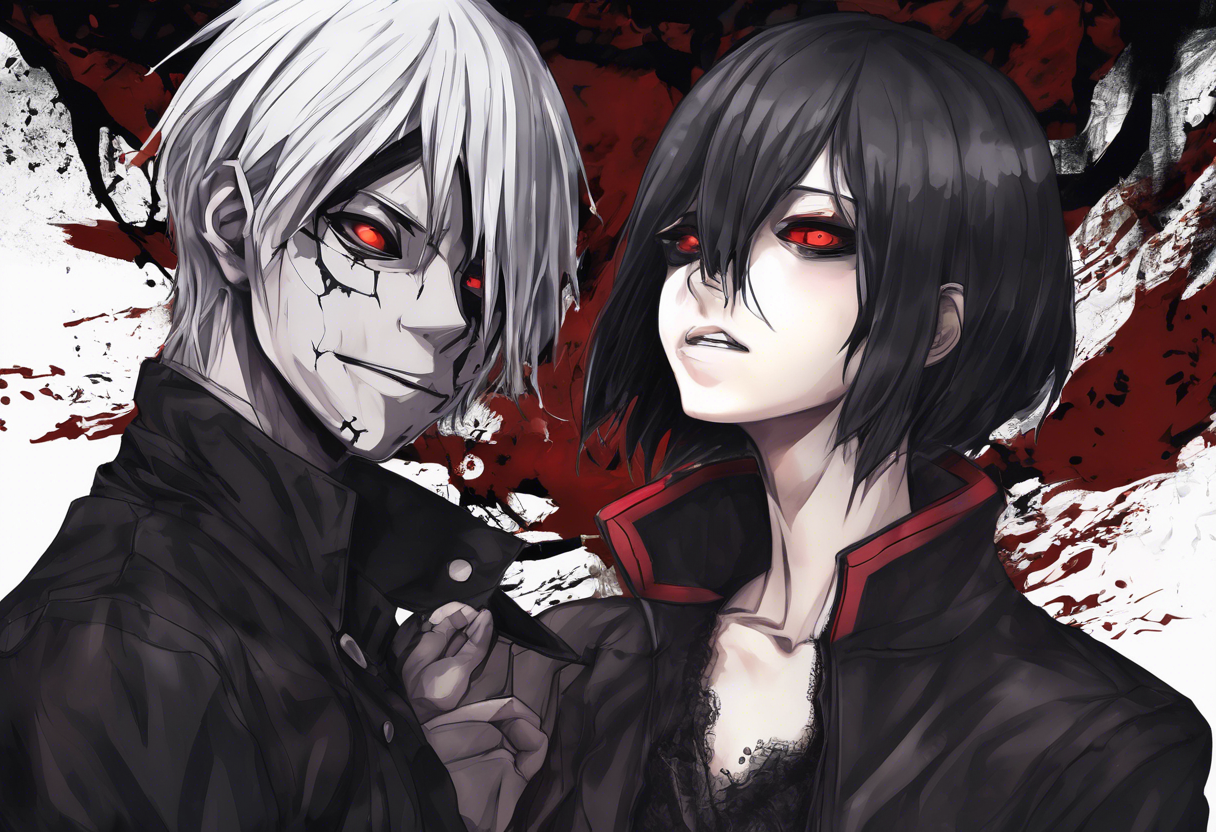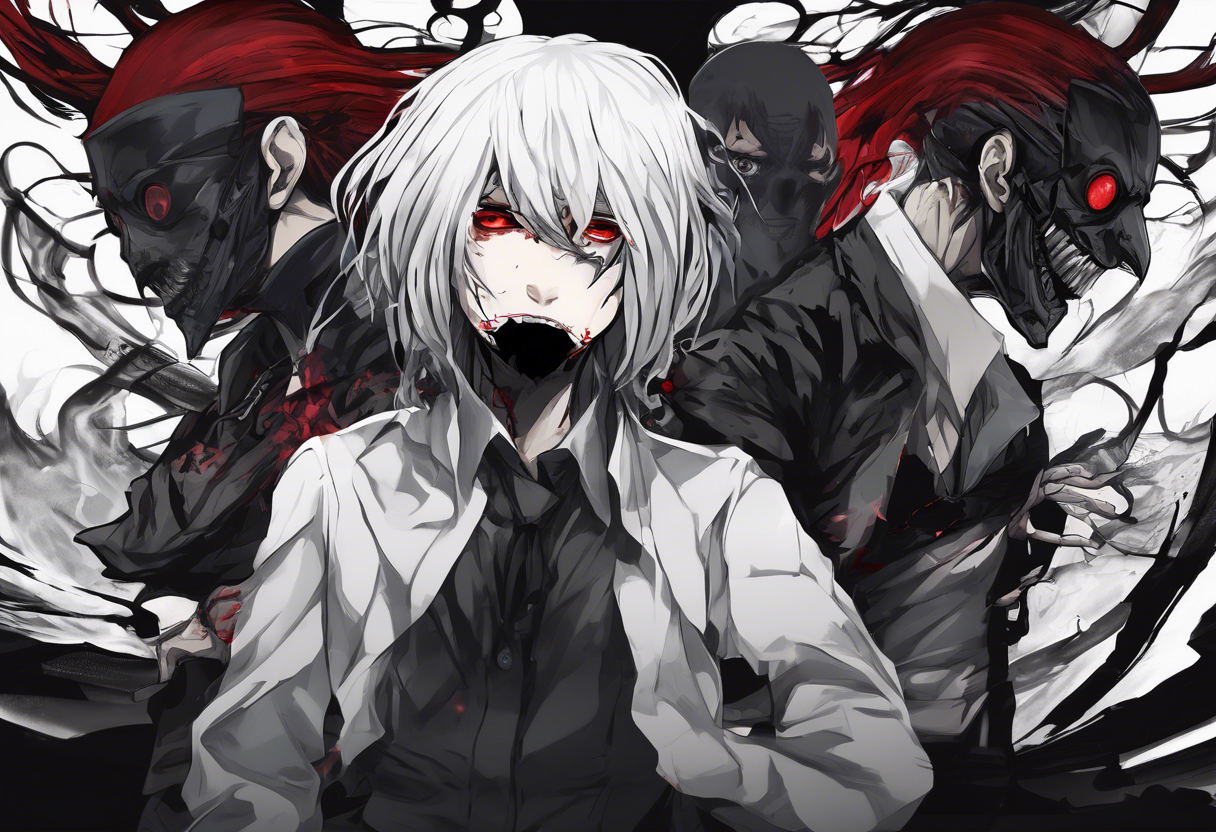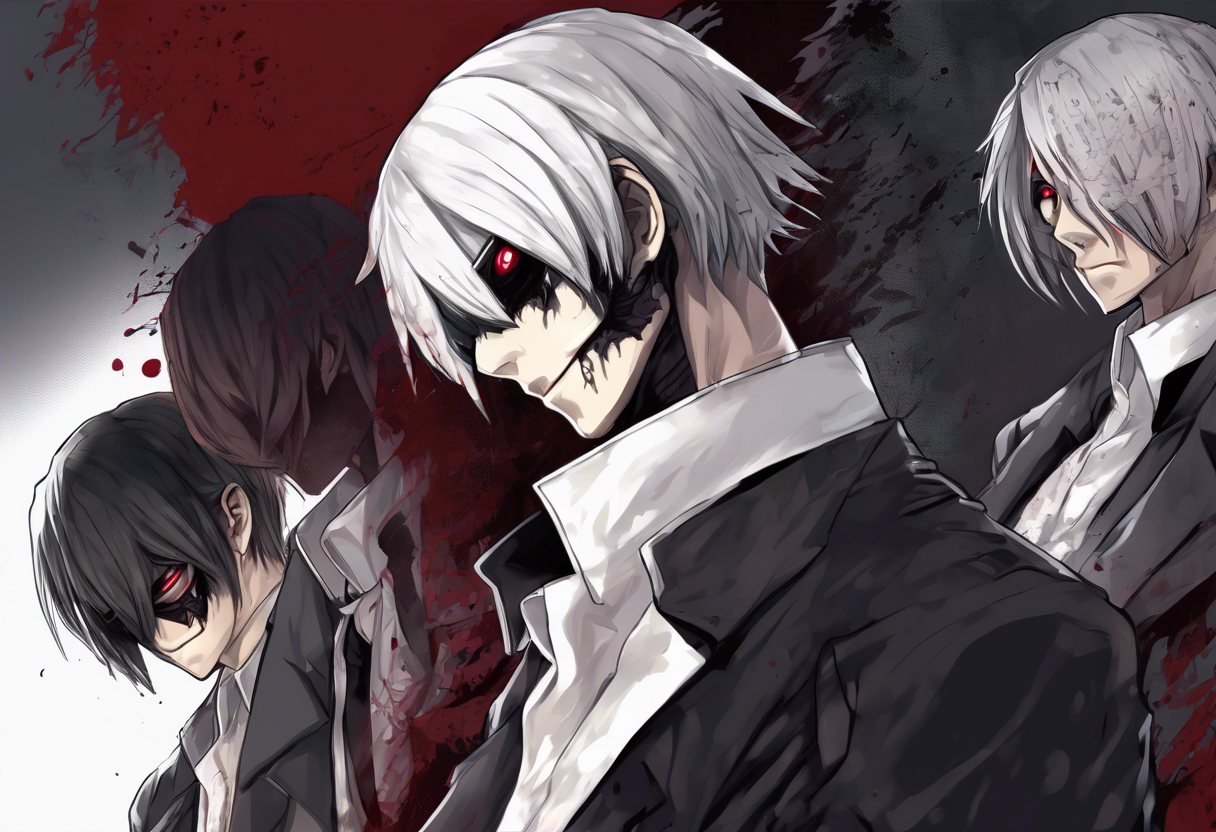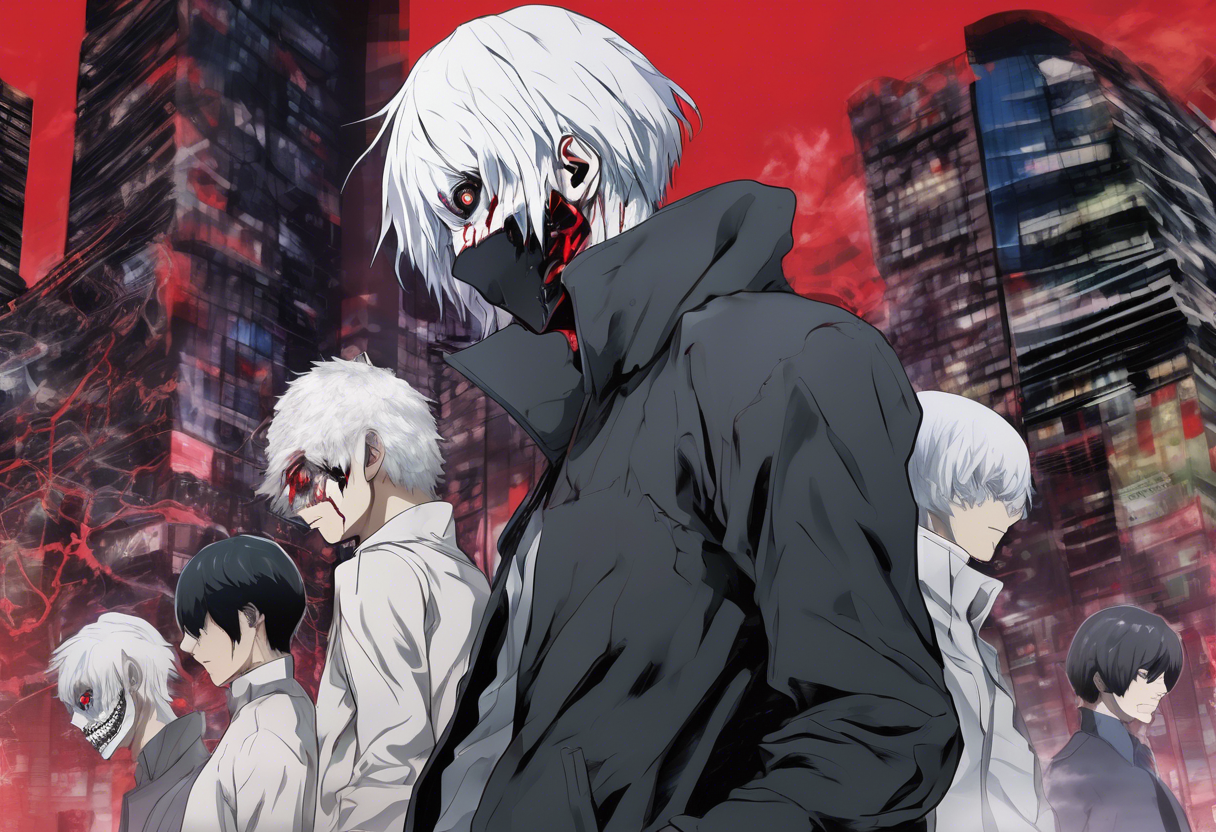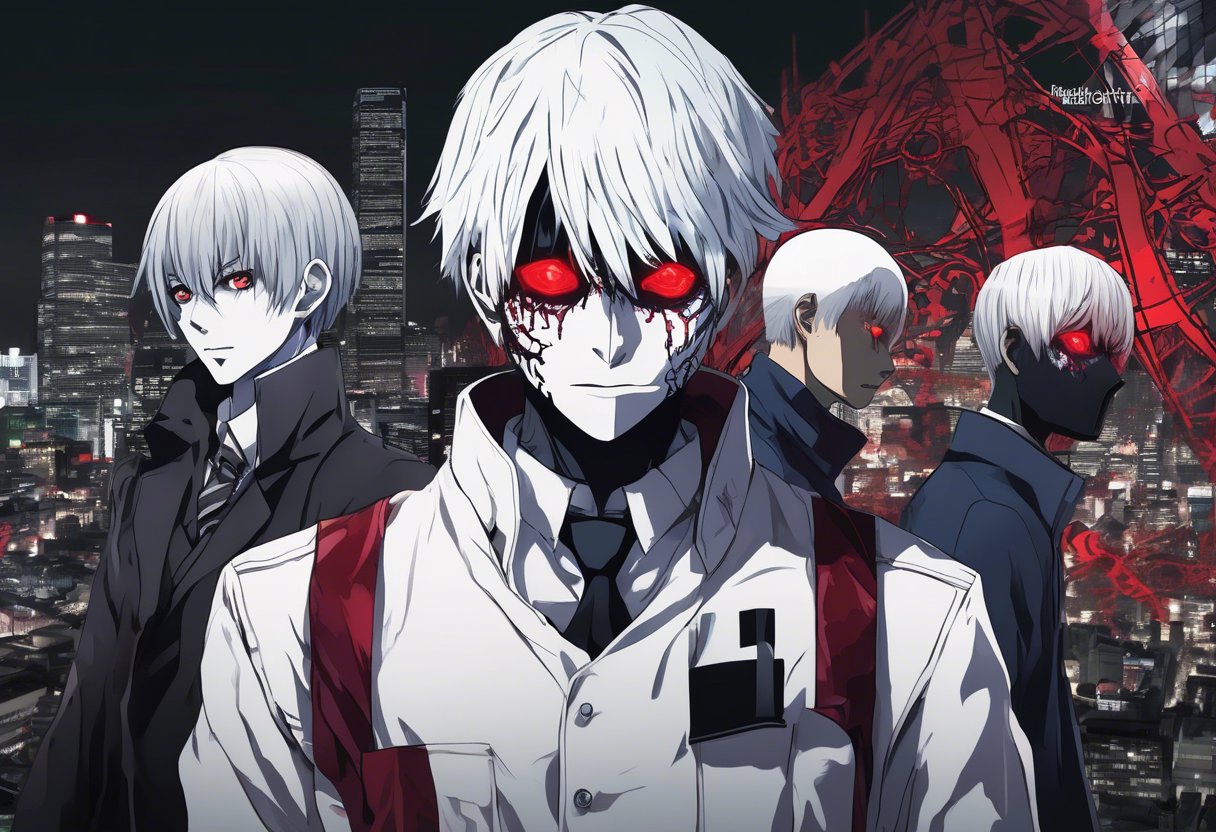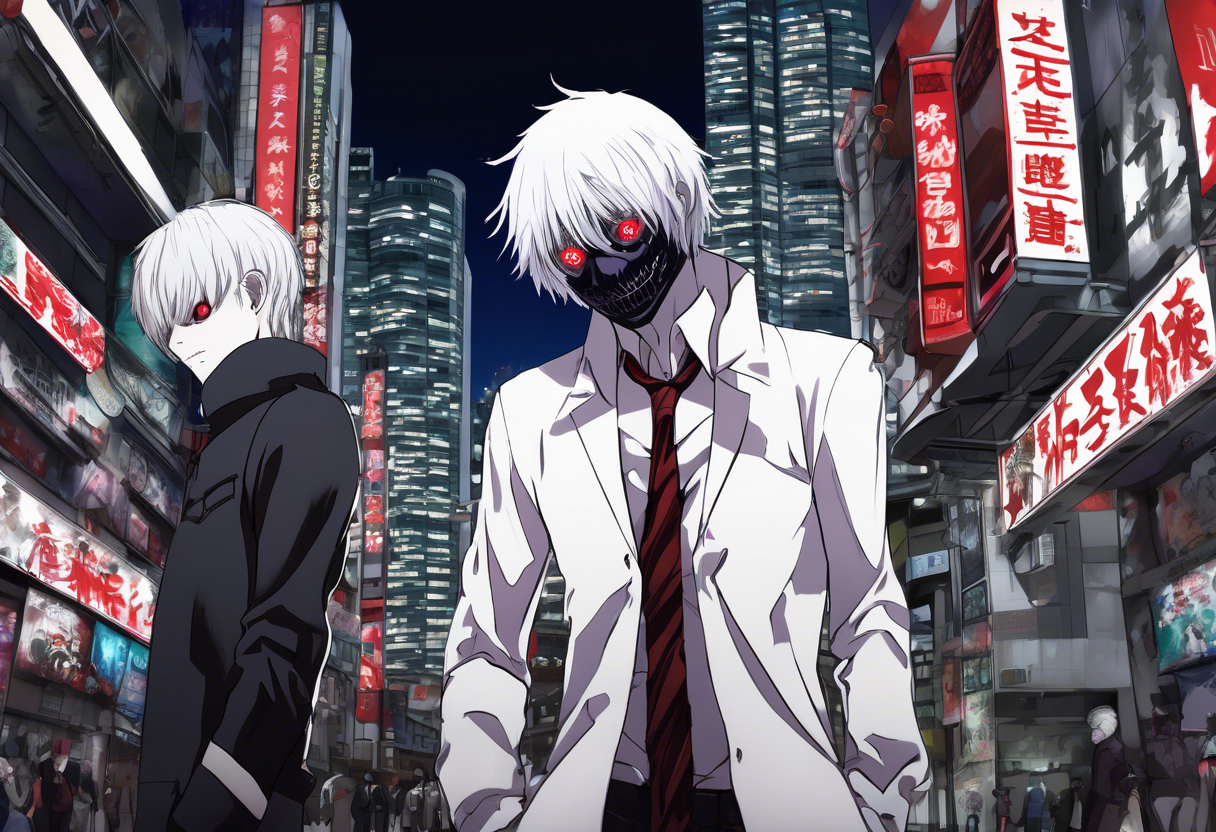Contents
Introduction
Tokyo Ghoul √A – Episode 15: Hangman is a pivotal episode in the second season of the anime series Tokyo Ghoul, which is based on the manga by Sui Ishida. This episode, aired on January 22, 2015, continues the intense narrative of the series, delving deeper into the conflict between ghouls and the Commission of Counter Ghoul (CCG). The episode was directed by Shuhei Morita, with the series itself produced by Pierrot, a renowned anime production studio. The production team, including writer Chūji Mikasano and producer Ken Hagino, played crucial roles in bringing this complex and emotionally charged story to life.
What sets Tokyo Ghoul √A – Episode 15: Hangman apart is its intricate plot, character development, and the exploration of themes that resonate deeply with audiences. The episode is part of a larger narrative that critiques societal norms, prejudice, and the struggle for identity and acceptance.
Plot Summary
The episode begins with a dramatic attack on a CCG prison bus by members of the Aogiri Tree, a powerful ghoul organization. This attack is led by Ken Kaneki, who has recently joined the Aogiri Tree, and Ayato Kirishima, a key figure in the organization. The primary objective of this assault is to rescue Naki, one of Jason’s old cohorts, from CCG custody. Naki’s rescue is a significant event, as it highlights the Aogiri Tree’s determination to challenge the CCG’s authority and protect their own.
As the Aogiri Tree members execute their plan, the scene shifts to Anteiku, a coffee shop that serves as a haven for ghouls. Here, Touka Kirishima and Hinami Fueguchi learn about Kaneki’s involvement in the attack. Their reactions are vastly different; Touka is concerned and feels a sense of responsibility towards Kaneki, while Hinami is more introspective, reflecting on her own place within the ghoul community and her relationship with Touka. This internal conflict within Hinami prompts her to try to be less of an imposition on Touka, showcasing the emotional depth and character development that is a hallmark of the series.
Meanwhile, Amon and Akira visit Cochlea, the maximum-security prison for ghouls, in search of information about the Owl, a mysterious and powerful ghoul. Their visit coincides with the Aogiri Tree’s attack on the facility, led by Kaneki and Ayato. This attack is a turning point in the episode, as it intensifies the conflict between the ghouls and the CCG. The battle is fierce, with both sides suffering significant losses.
During the chaos, Naki is rescued, but his emotional state is fragile. He fights Ayato, screaming for Yamori, a figure from his past who had a profound impact on him. Ayato eventually subdues Naki, who then throws a tantrum, believing his feelings caused the truck to explode. This scene underscores the psychological trauma many characters endure and the complex relationships within the ghoul community.
The episode also explores other narrative arcs, such as Touka’s visit to Kaneki’s former university, where she encounters Hideyoshi Nagachika, a friend of Kaneki’s. This encounter adds a layer of complexity to the story, highlighting the connections between characters and the impact of Kaneki’s new path on those around him.
The central conflict of the episode revolves around the storming of Cochlea, which symbolizes the escalating war between the ghouls and the CCG. This event is not just a physical battle but also an ideological one, with both sides fighting for their right to exist and be accepted. The episode culminates in a dramatic showdown, setting the stage for further conflicts and character developments in subsequent episodes.
Throughout the episode, the settings of Tokyo’s ghoul-infested districts and the CCG’s facilities serve as a backdrop for the narrative. These settings are crucial in highlighting the societal divide and the hidden world of ghouls living among humans. The narrative arcs and character developments are intricately woven, creating a cohesive and engaging storyline that keeps viewers invested in the characters’ fates.
Themes and Symbolism
Tokyo Ghoul √A – Episode 15: Hangman delves into several central themes that are pivotal to the series. One of the most prominent themes is the struggle for identity and acceptance. Kaneki’s journey, in particular, exemplifies this theme as he navigates his dual existence as a human and a ghoul. His involvement with the Aogiri Tree and his actions in this episode highlight the internal conflict he faces in finding his place in a world where he is not fully accepted by either humans or ghouls.
Another significant theme is the critique of societal norms and prejudice. The CCG’s relentless pursuit of ghouls and the societal fear of these creatures mirror real-world issues of discrimination and xenophobia. The episode portrays the consequences of such prejudice, showing how it leads to violence and suffering on both sides.
Symbolism also plays a crucial role in this episode. The attack on Cochlea symbolizes the ghouls’ fight for freedom and their right to exist. Naki’s emotional breakdown and his screams for Yamori symbolize the psychological scars left by past traumas and the complexities of human (or ghoul) relationships.
Cultural Impact
Tokyo Ghoul √A – Episode 15: Hangman had a significant cultural impact upon its release. The episode was part of a larger narrative that resonated with audiences worldwide, particularly those interested in dark fantasy and social commentary. The series’ exploration of themes such as identity, acceptance, and prejudice struck a chord with viewers, making it a notable work in the anime genre.
The episode’s influence can be seen in various forms of media and fan culture. It has inspired fan art, cosplay, and fan fiction, demonstrating its enduring popularity. The series as a whole has also been referenced in other anime and manga, further solidifying its place in popular culture.
Critical Reception
Tokyo Ghoul √A – Episode 15: Hangman received positive reviews from both critics and audiences. Critics praised the episode’s intense action sequences, emotional depth, and the continuation of the series’ complex narrative. The character developments, particularly Kaneki’s and Hinami’s, were highlighted as strong points of the episode.
Audiences also responded well to the episode, appreciating the escalation of the conflict between the ghouls and the CCG. However, some critics noted that the pacing could be improved and that certain plot points felt rushed. Despite these minor criticisms, the episode was generally well-received and contributed to the overall acclaim of the series.
Legacy
Tokyo Ghoul √A – Episode 15: Hangman continues to be an influential and memorable episode within the anime community. Its impact on the series as a whole is significant, as it sets the stage for the climactic events that follow. The episode’s themes and character developments have inspired many, making it a standout in the dark fantasy genre.
The series’ exploration of complex themes and its well-developed characters have made it a favorite among anime enthusiasts. Tokyo Ghoul as a whole has left a lasting legacy in the world of anime, influencing future works and remaining a beloved series years after its release.

